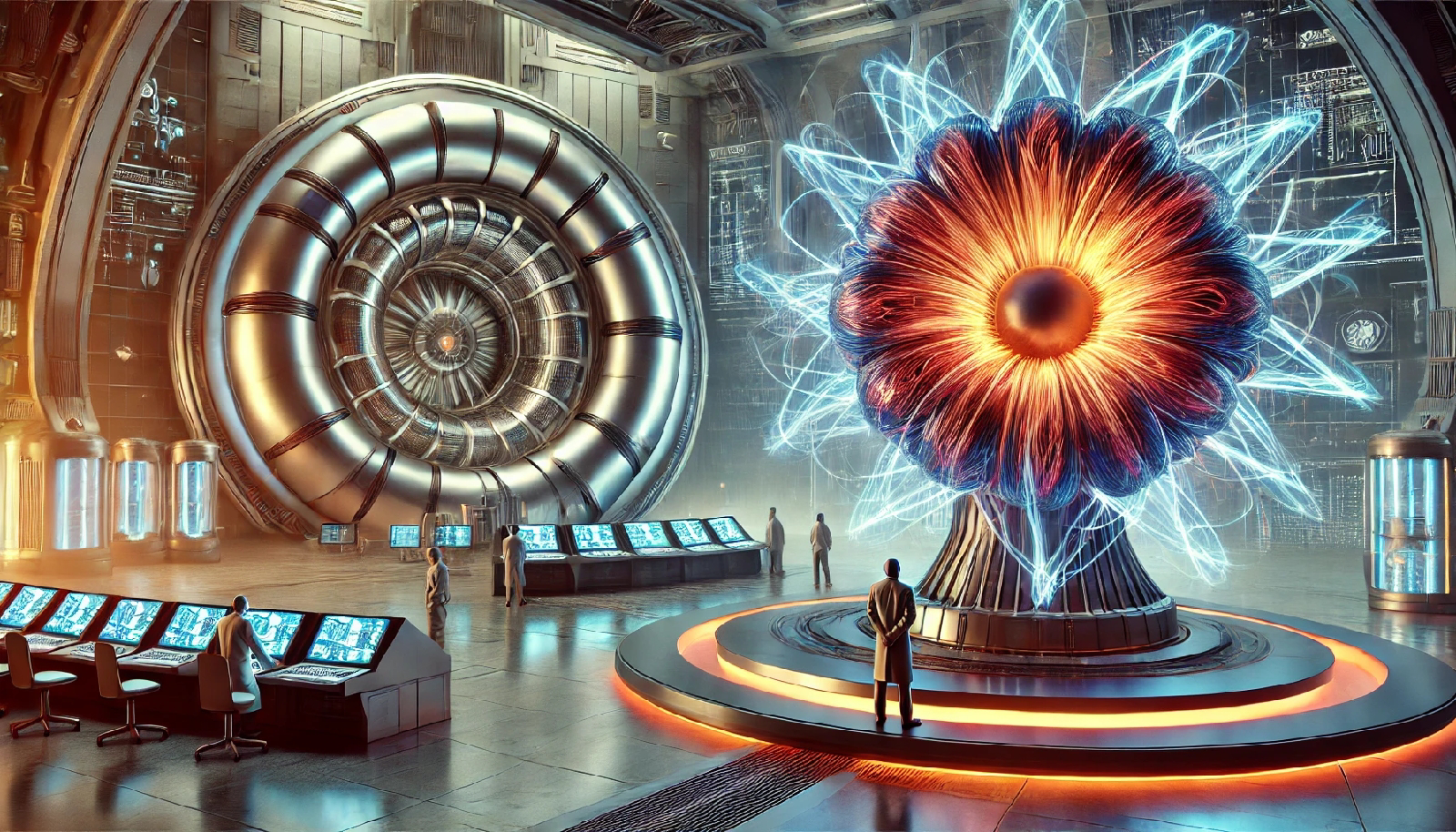Hi there, dreamers and deep thinkers! Let’s talk about something that’s not just cool—it’s cosmic: nuclear fusion. You know, the process that powers the sun? Well, scientists are working on harnessing it right here on Earth with these mind-blowing devices called tokamaks and stellarators.
Fusion could solve humanity’s energy crisis, offering limitless, clean energy. But, as you might guess, taming a mini-sun isn’t easy. That’s where these two sci-fi-sounding technologies come into play.
What Is Nuclear Fusion, and Why Does It Matter?
Before we dive into tokamaks and stellarators, let’s break down fusion. Fusion is the process of combining two light atomic nuclei—usually isotopes of hydrogen like deuterium and tritium—into a heavier one. This releases a ton of energy, thanks to Einstein’s famous equation, E=mc2E=mc^2E=mc2.
The beauty of fusion? It doesn’t produce long-lived radioactive waste like nuclear fission, and the fuel—hydrogen—is abundant in water. Essentially, it’s the holy grail of energy, but achieving it requires temperatures hotter than the sun’s core.
Enter the tokamak and the stellarator—our best bets for creating and controlling these insane conditions.
Tokamaks: The Magnetic Donuts of the Future
The tokamak is like a giant magnetic donut (or bagel, if you prefer). It uses powerful magnetic fields to trap and control plasma—the fourth state of matter where fusion happens. Plasma is a super-hot soup of charged particles, and without magnetic confinement, it would burn through everything.
The word “tokamak” comes from a Russian acronym that roughly translates to “toroidal chamber with magnetic coils.” Why Russian? Because Soviet scientists invented it in the 1950s. Since then, tokamaks have dominated fusion research worldwide.
The key feature of a tokamak is its doughnut-shaped chamber, where the plasma is heated to over 100 million degrees Celsius. At these temperatures, the hydrogen nuclei start fusing, releasing energy in the form of neutrons. The tricky part is keeping the plasma stable and confined long enough for fusion to occur.
Stellarators: Twisted Yet Elegant
If tokamaks are donuts, stellarators are twisted pastries—more croissant than bagel. Unlike tokamaks, stellarators don’t need an electric current running through the plasma for confinement. Instead, their magnetic fields are entirely generated by external coils.
This design eliminates one major problem tokamaks face: plasma instability caused by that internal current. Stellarators are more stable, but their complex shapes make them much harder to design and build. Think of them as the quirky geniuses of the fusion world.
The most famous stellarator, Germany’s Wendelstein 7-X, looks like something out of a sci-fi movie. Its intricate magnetic field geometry offers improved confinement, but building it took decades of computational modeling and engineering.
How Do Tokamaks and Stellarators Compare?
At first glance, these devices seem similar—they both use magnetic fields to confine plasma. But dig a little deeper, and you’ll find they’re like two siblings with very different personalities.
Tokamaks:
- Pros: Easier to build and operate; proven track record with experiments like ITER and JET.
- Cons: Prone to plasma instabilities and requires pulsed operation (not continuous).
Stellarators:
- Pros: More stable and capable of continuous operation.
- Cons: Complex and expensive to design, requiring advanced 3D modeling.
It’s not a matter of which is better—each has strengths and weaknesses. Scientists are pursuing both paths to see which one gets us closer to practical fusion energy.
The Big Players in Fusion Research
ITER: The Global Tokamak Giant
ITER (International Thermonuclear Experimental Reactor) is a massive tokamak under construction in France. It’s a collaborative effort involving 35 countries and aims to produce 500 megawatts of fusion power from 50 megawatts of input power.
If successful, ITER will prove that fusion can produce more energy than it consumes—a game-changer for global energy. However, it’s not expected to be fully operational until the 2030s.
Wendelstein 7-X: The Stellarator Superstar
Meanwhile, Germany’s Wendelstein 7-X is the world’s most advanced stellarator. It won’t produce energy like ITER, but it’s testing whether stellarators can achieve the same level of efficiency as tokamaks. Early results have been promising, with excellent plasma confinement and stability.
The Challenges of Fusion
Why don’t we have fusion power yet? Well, it’s not as simple as smashing hydrogen atoms together.
First, there’s the energy input vs. output problem. Fusion requires immense amounts of energy to heat plasma and maintain magnetic confinement. Right now, we’re still putting more energy in than we’re getting out.
Then there’s plasma stability—keeping the plasma from touching the walls of the reactor, which would cool it down and cause damage. Finally, building and maintaining these reactors is outrageously expensive, with budgets running into billions of dollars.
Why It’s Worth the Effort
Despite the challenges, fusion offers a dream worth chasing. Imagine a world where energy is cheap, clean, and virtually limitless. No more reliance on fossil fuels. No more worrying about climate change.
Fusion could power entire cities, desalinate seawater, and fuel space exploration. It’s a leap toward a sustainable future and a testament to human ingenuity.
What’s Next for Fusion?
The next decade will be critical for both tokamaks and stellarators. ITER is expected to achieve its first plasma in 2025, marking a major milestone. At the same time, researchers are working on smaller, more efficient tokamaks, like SPARC from MIT.
Stellarators, too, are gaining momentum, with projects like Japan’s Large Helical Device exploring new design possibilities. Advances in superconducting materials and artificial intelligence are accelerating progress for both technologies.
Will we see a working fusion power plant in our lifetime? Maybe. But even if it takes longer, every step brings us closer to an energy revolution.
Stay Curious
Tokamaks and stellarators are humanity’s ambitious attempt to replicate the sun’s power here on Earth. They’re a testament to our unyielding quest for progress, even when the odds are against us.
So the next time you hear someone talking about fusion, you’ll know it’s more than science fiction—it’s the future. Stay curious, dreamers and deep thinkers. The stars are closer than you think.




